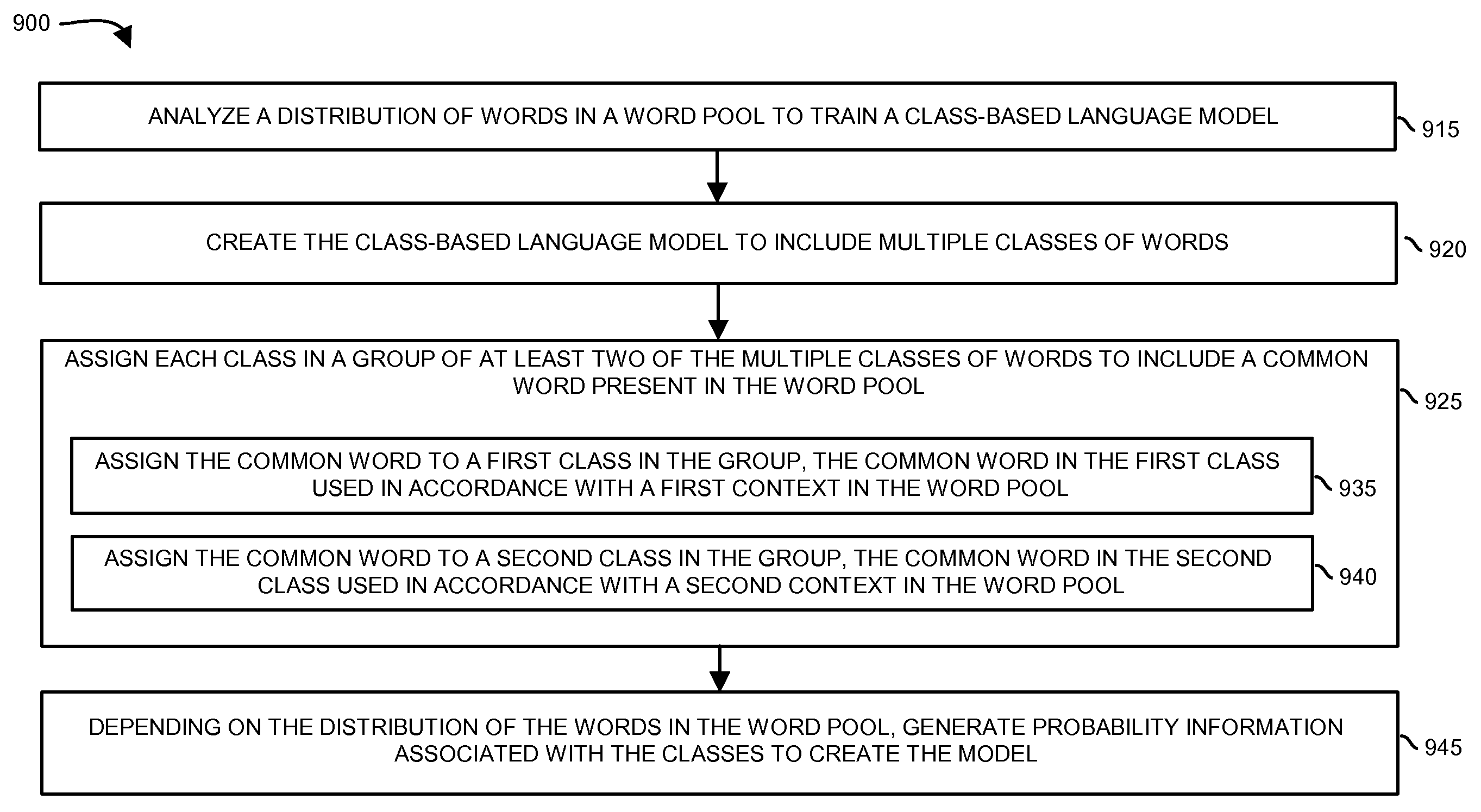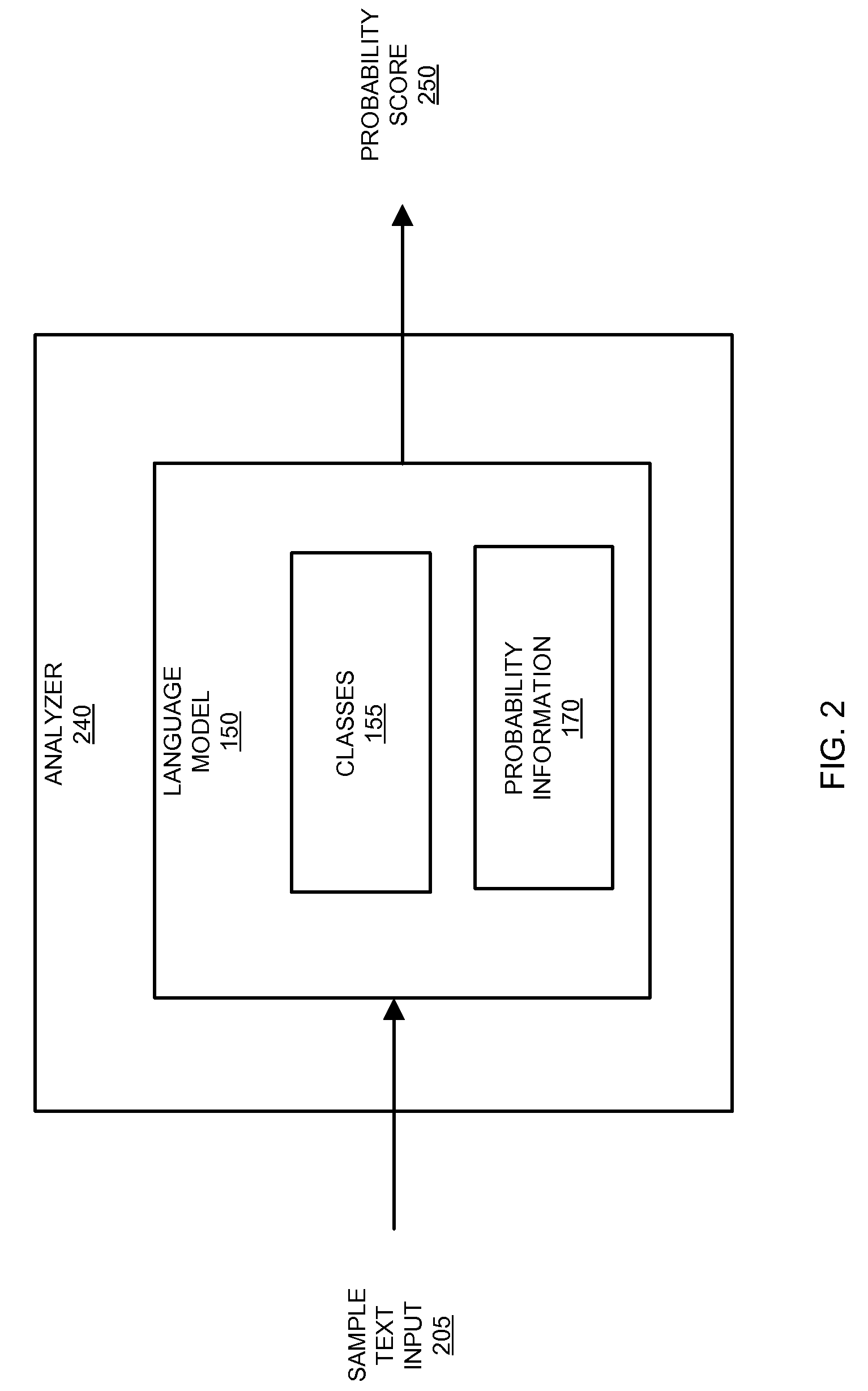Class-based language model and use
- Summary
- Abstract
- Description
- Claims
- Application Information
AI Technical Summary
Benefits of technology
Problems solved by technology
Method used
Image
Examples
Embodiment Construction
[0040]As discussed above, one embodiment herein includes novel generation and use of a class-based language model. For example, embodiments herein include assigning a common word to each of multiple classes in a class-based language model. Assignment of a common word to multiple classes as discussed herein enables generation of more accurate word probability scores.
[0041]FIG. 1 is an example diagram illustrating a computer environment 100 for creating a class-based language model according to embodiments herein.
[0042]As shown, language model generator 140 analyzes words in word pool 110 to create language model 150. In one embodiment, the language model 150 generated by the language model generator 140 is a Bayesian class-based language model.
[0043]Word pool 110 can be a text-based resource such as ordered words, a document of words, uttered words in an audio file, etc.
[0044]In one embodiment, the language model generator 140 receives input indicating a number of classes 155 to be g...
PUM
 Login to View More
Login to View More Abstract
Description
Claims
Application Information
 Login to View More
Login to View More - R&D
- Intellectual Property
- Life Sciences
- Materials
- Tech Scout
- Unparalleled Data Quality
- Higher Quality Content
- 60% Fewer Hallucinations
Browse by: Latest US Patents, China's latest patents, Technical Efficacy Thesaurus, Application Domain, Technology Topic, Popular Technical Reports.
© 2025 PatSnap. All rights reserved.Legal|Privacy policy|Modern Slavery Act Transparency Statement|Sitemap|About US| Contact US: help@patsnap.com



